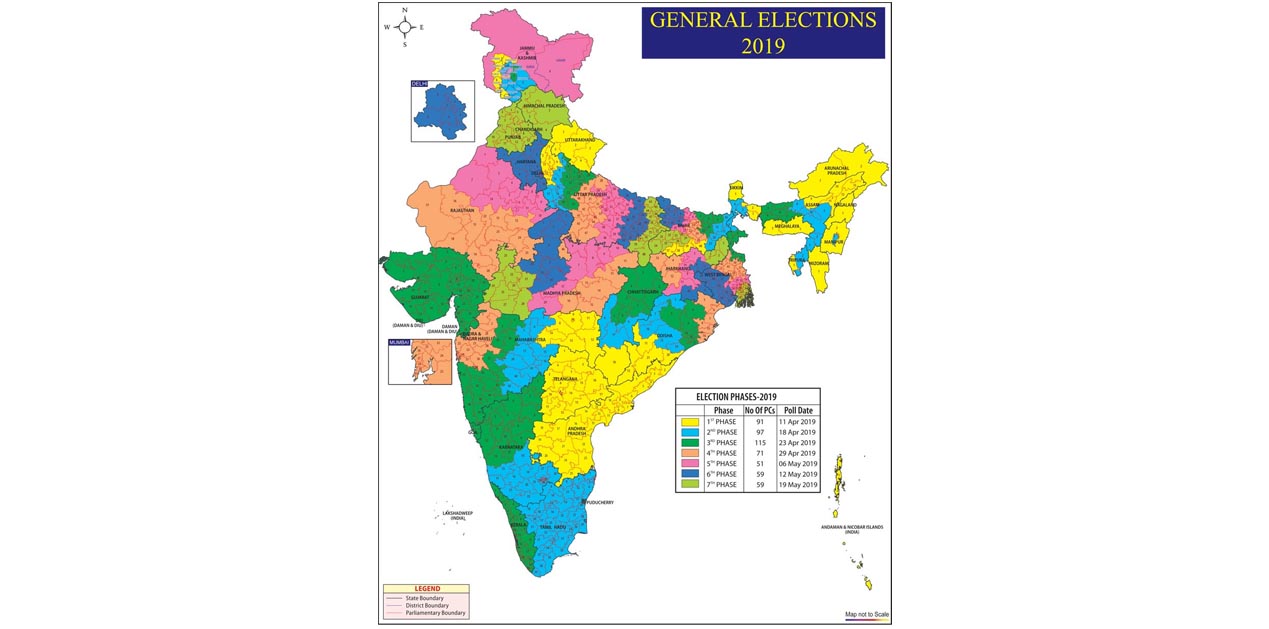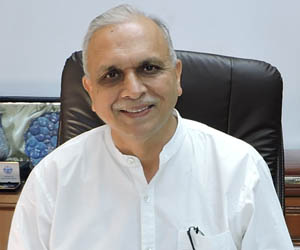The year 2019 will go down as one of the most seminal years for India. The National Democratic Alliance (NDA), led by the Bhartiya Janta Party (BJP), won a spectacular victory in the Lok Sabha elections with the BJP winning a record 303 seats on its own. This was for the first time in 50 years that a political party won a parliamentary majority on its own in consecutive elections.
Elections
The BJP won the election on its track record of development in the first term but also on the back of the strong wave of nationalism that swept the country after the terrorist attacks done by Jaish-e-Mohammad (JeM) in Pulwama in J&K. The Indian Air Force responded by undertaking precision airstrikes on the terrorist camps in Balakot in Pakistan. The government won much acclaim for its resolve and determination in dealing with terrorism. The airstrikes in Balakot, fully supported by the fellow citizens, played a deceive role in the BJP’s elections victory in May.
Triple Talaq
After the elections, PM Modi’s government had the Triple Talaq bill passed by the Rajya Sabha on 30 July 2019. It became law on 1 August 2019. Triple Talaq law, welcomed by the Muslim women, has been hailed as a major social reform although it has been opposed by a section of the Muslims and several opposition parties. The BJP can take credit for this landmark law.
Abrogation of Article 370
Encouraged by the massive mandate, the government lost no time in passing several significant bills into law which would shape India in the years to come. In August, it abrogated Article 370 of the constitution and reorganized the state of J&K into two Union Territories, imposed restrictions on the internet and put key political leaders under detention. The removal of Article 370, a temporary provision in the Constitution, which gave special status to J&K, was a bold and courageous step that the earlier governments had hesitated to take. The security situation in J&K has improved since then but political activity has come to a halt. The abrogation of Article 370 jolted Pakistan which went into an overdrive globally to discredit India. Although the opposition parties criticized the government, Article 370’s abrogation was welcomed by the large cross-section of the public.
The Supreme Court verdict on Ram Mandir issue
The Supreme Court gave a balanced judgment on the Ram Mandir case, ruling in favour of the construction of a Ram temple at the disputed Babri mosque site. At the same time, it gave five acres of land for the construction of a mosque at an appropriate place in Ayodhya. The verdict brought to end one of the most serious disputes which had for more than 150 years caused a rift between the Hindu and the Muslim communities in India. By and large, the decision was accepted by the Muslim community although some sections felt that the judgment had been unfair to the Muslims. No review petition has been filed. The country heaved a sigh of valid as there was no untoward incident in the aftermath of the verdict.
Citizenship Amendment Act
An emboldened government pressed ahead with new bills thereby fulfilling the BJP election manifesto promises. One such act passed by both houses of the parliament was the Citizenship Amendment Bill (CAB) which provides for relaxed criteria for giving Indian citizenship to the illegal migrants, belonging to the Hindu, Sikh, Jain, Buddhist, Christians, and Parsis from Pakistan, Bangladesh and Afghanistan who had fled to India escaping persecution on religious grounds and living here as illegal migrants. The Muslim illegal migrants were left out of the ambit of the bill on the logic that Muslims could not claim religious persecution in an Islamic country.
The CAA was strongly opposed by the opposition parties and protests broke out in several parts of the country, including Assam, as well as in many universities. Assam feared that CAA would result in the settlement of lakhs of immigrants who would swamp the indigenous Assamese culture.
Protests were accompanied by arson, looting and rioting. Police clashed with protestors on several occasions. Several, people died in these violent protests, particularly, in the U.P. Public and private property was damaged and burned by anti-social elements and possibly the protestors too. The government blamed the opposition parties for spreading false rumours about the CAA and the National Register of Citizenship (NRC) and instigating violence. The opposition parties accused the government of destroying the fabric of the Indian Constitution by passing laws, which allegedly violated the principles of secularism and equality before the law. Faced with mounting protests and unrest, the government clarified the situation to the effect that the CAA was designed to give and not take away citizenship and that it had nothing to do with the NRC. The NRC had not even been discussed in the cabinet. These clarifications and reassurance notwithstanding, the mistrust between the government and the opposition increased.
International Ramifications
The sudden and unexpected emergence of violent protests in otherwise a peaceful and calm India was bound to catch the attention of the world. The scheduled India Japan summit meeting in Guwahati had to be postponed. Bangladesh cancelled the visits of its foreign minister and home minister to India. The US Congress lectured the Indian government to protect the interests of the minorities. Even as the controversy about the CAA and NRC was raging, the government announced the decision to conduct an exercise to build a National Population Register (NPR). The opposition parties suspected that the NPR exercise would feed into the NRC exercise, despite the assurance to the contrary given by the Home Minister. The opposition parties have not come out looking good from the CAA episode. They have not forcefully condemned violence. It also turned out that many of them, in earlier years, had supported relaxed criteria of citizenship for minority migrants from erstwhile Pakistan. The government exposed the double speak of the opposition parties producing appropriate evidence. Violent protests certainly dented the image of India as a country on the move. It can hurt investor sentiment too. India’s last minute decision not to join the Regional Comprehensive Economic Partnership (RCEP) has also disappointed the ASEAN countries and was a setback to India’s Act East Policy.
Strategic Communication
Prime Minister Modi began his second term with the promise of building a new India within the framework of Sabka Saath, Sabka Vikas and Sabka Vishwas. He had reassured the country that his government’s policies would be inclusive, making no distinctions on the basis of religion, castes, creed, race etc. However, due to misinformation and preconceived notions, the CAA has been seen by the minorities as divisive. This has created a problem of perception and misperception. Wrong or right, the government somewhere fell short of assuring the minorities who feel that they have been left out of the government’s Vikas Yatra. They harbour the perception that the CAA and NRC, taken together, are directed against them. The government felt the need to improve its communication and issued several press notes. Top leaders, including the home minister, gave interviews to reassure the citizens that their citizenship was safe and would not be taken away by the CAA. This had some calming effect but an atmosphere of mistrust between the government and the opposition prevailed. How the delicate political situation plays out will be the key theme in 2020.
Economic Slowdown
The economic slowdown in India was the big story of 2019. The quarterly GDP growth continued to fall throughout the year while exports have remained stagnant. Tax collections were lower than expected and the government faced the uphill task of balancing its books while increasing public spending. The financial system was under great stress due to bad loans. The real estate sector remained in deep crisis. The quality of the official data put out was questionable making analysis and policy making difficult. The question of the autonomy of the RBI also came under sharp security.
Reviving the economy will remain the most pressing task before the government in 2020. The government announced several bold steps, including the decision to drastically lower the corporate tax, recapitalise and reorganise the banks, etc. Government efforts to improve the health of the banking sector showed some positive results as the bad loan situation improved. Although flushed with funds, the banks were reluctant to lend due to the hangover of the bad loans crisis and the restrictive lending norms imposed by the RBI. As a result, the businesses faced serious funds crunch leading to sharp reduction in economic activity.
The 2020 budget will be watched keenly for the government’s roadmap for economic revival. Achieving the US$ 5 trillion target for the GDP will require an above 8 percent annual GDP growth. How this is to be achieved is not clear as yet. The target seems ambitious at this stage.
The foundation of a strong India needs to be built on good quality, affordable health and education for its citizens. The government has unfolded many schemes in that direction. The Ayushman Bharat Scheme providing health insurance to the poorest sections has been launched and has had a good start. To become an innovation driven, knowledge economy, deep reform in the education sector will be necessary. In 2020, we may see education policy being implemented.
Governance
Governance issues need to be addressed urgently. 2019 saw a deterioration in the Centre-State relations. Some Chief Minister were leading anti-CAA demonstrations while others declared that they would not implement a law passed by the parliament. Such a show of defiance of the parliament by elected chief ministers was unprecedented. It represents a disturbing trend.
The GST Council, which takes decisions on a consensus basis, has of late been compelled to take decisions by vote because, on certain issues involving tax sharing, a consensus could not be reached. The ‘New India’ will require a qualitative improvement in relations between the Centre and the States. The drop in taxation resources due to economic slowdown is sharpening the Centre-State rhetoric. This trend does not bode well for the stability and needs to be curbed. The state of the relationship between the ruling party and the opposition parties also needs to be improved. More open and sincere dialogue between the contending parties in required in the national interest.
In 2020 the economy will need urgent attention. The creation of demand in the economy should be the foremost task. The war of words that broke out on the CAA, NRC distracts from the urgent task of economic revival. Unbridled, motivated identity politics, if it goes beyond a point, will harm the national interest. A consensus on nation building tasks must be built through dialogue consultations and inclusive politics. The National Integration Council, a constitutional forum of government and the Chief Ministers, should be revived. The NITI Aayog can also play its role in minimising the friction between the Centre and the States.
The tasks for 2020 are cut out. As the year ends, the negative tendencies that have appeared in the country need to be checked and reversed. The formula of Sabka Saath, Sabka Saath and Sabka Vishwas remains valid as ever. It must be implemented.
(The paper is the author’s individual scholastic articulation. The author certifies that the article/paper is original in content, unpublished and it has not been submitted for publication/web upload elsewhere, and that the facts and figures quoted are duly referenced, as needed, and are believed to be correct). (The paper does not necessarily represent the organisational stance... More >>
Image Source: https://revolutionarygis.wordpress.com/2019/03/11/india-2019-elections/










Post new comment